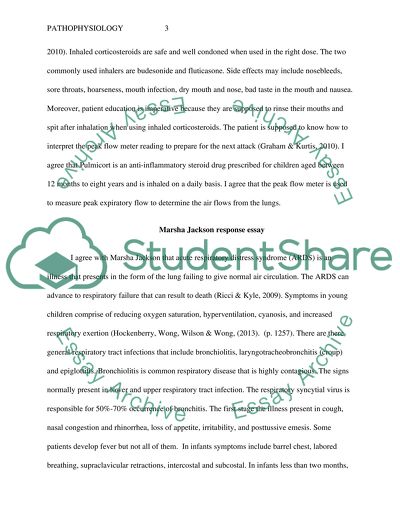Pathophysiology Essay Example | Topics and Well Written Essays - 500 words. Retrieved from https://studentshare.org/nursing/1665942-pathophysiology
Pathophysiology Essay Example | Topics and Well Written Essays - 500 Words. https://studentshare.org/nursing/1665942-pathophysiology.


